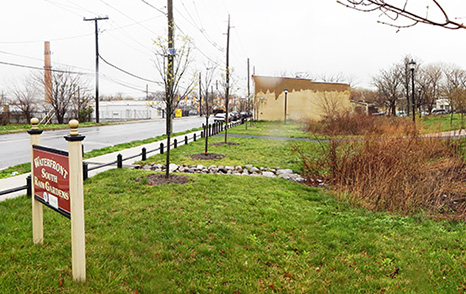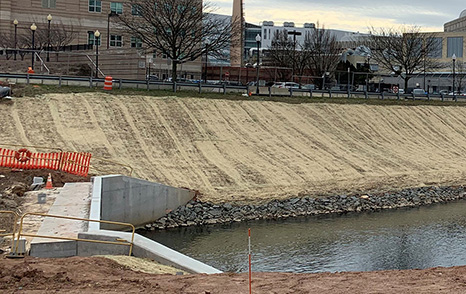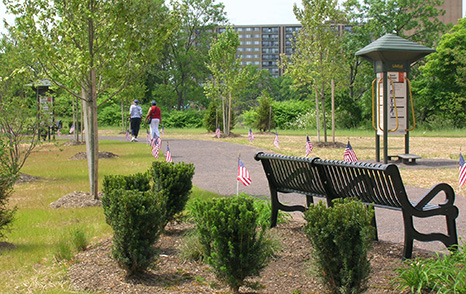
All New Jersey residents, regardless of income, race, ethnicity, color, or national origin, have a right to live, work, and recreate in a clean and healthy environment. Historically, New Jersey’s low-income communities and communities of color face a disproportionately high number of environmental and public health stressors and, as a result, suffer from increased adverse health effects. New Jersey seeks to correct these outcomes by furthering the promise of environmental justice.
DEP’s Office of Environmental Justice (OEJ) aims to improve the quality of life in New Jersey’s most vulnerable communities by educating and empowering communities who are often outside of government decision-making processes and guiding DEP’s programs and other state departments and agencies in implementing environmental justice.
EJ Rules Implementation What's New? Learn More About Us Take ActionWhat is Environmental Justice?
The U.S. Environmental Protection Agency (EPA) defines environmental justice as “the fair treatment and meaningful involvement of all people regardless of race, color, national origin, or income with respect to the development, implementation, and enforcement of environmental laws, regulations, and policies.”
“Fair treatment” means that no group of people should bear a disproportionate share of the negative environmental consequences resulting from industrial, governmental, and commercial operations or policies.
“Meaningful involvement” means that people have an opportunity to participate in decisions about activities that may affect their environment and/or health; the public’s contribution can influence the regulatory agency’s decision; community concerns will be considered in the decision-making process; and decision makers will seek out and facilitate the involvement of those potentially affected.
Historically, New Jersey’s low-income communities and communities of color have been subject to a disproportionately high number of environmental and public health stressors, including pollution from numerous industrial, commercial, and governmental facilities located in those communities and, as a result, suffer from increased adverse health effects including, but not limited to, asthma, cancer, elevated blood lead levels, cardiovascular disease, and developmental disorders.
Environmental Justice Hot Topics
EJ Rules Implementation and Participation
NJ’s EJ Law requires DEP to evaluate the environmental and public health impacts of certain facilities on overburdened communities and issue decisions on those facilities’ permit applications.
Under the EJ Rules, an applicant must hold an in-person public hearing in the host overburdened community to present the proposed project and hold meaningful public participation.
Click here for public notices relating to EJ Law permit applications.
Environmental Justice Directory
The Environmental Justice Directory compiles a list of advocates dedicated to Environmental Justice (EJ) initiatives in New Jersey. Mandated by the EJ Rule, permit applicants under this regulation are required to engage meaningfully with residents of overburdened communities (OBCs). This directory, managed by the DEP, serves as a public resource featuring community-based organizations, concerned residents, and EJ advocates who wish to participate in and stay informed about public hearings related to the EJ Rule.
Updates to EJ Mapping, Assessment and Protection Tool (EJMAP)
DEP has refreshed EJMAP with new stressor data. Any permit application submitted on or after 1/31/25 must use the new stressor data layer for analysis. The tool will default to the revised layer and the original layer will remain as an archived layer.
To learn what stressor data was updated in EJMAP, visit the January 2025 EJMAP Data Update. For more information on all previous EJMAP updates, view the Overburdened Communities (OBC) Archive.
For details of calculations behind EJMAP, please read EJMAP Technical Guidance .
Watch this tutorial for more info on using EJMAP.
Questions or comments about the EJMAP can be sent to ejmapfeedback@dep.nj.gov.
Examples of DEP’s EJ Projects

Supplemental Environmental Projects (SEPs)
A Supplemental Environmental Project (SEP) is an environmentally beneficial project that a respondent voluntarily agrees to perform as a condition of settling an enforcement action. A SEP is an activity that the violator would not otherwise have been required to perform, and in which the public or the environment is the primary beneficiary.

Community Collaborative Initiative
The Community Collaborative Initiative (CCI) works closely with diverse partners in urban communities to support their vision for revitalization and growth. NJDEP’s traditional role is evolving through the use of a single DEP point-of-contact to leverage resources and expertise that brings innovative solutions to complex environmental challenges.

Brownfield Site Reuse Success Stories
The Office of Brownfield Reuse works diligently with the public and private sector to move brownfield properties through the remediation and redevelopment process. When a brownfield redevelopment project comes to fruition, local communities experience benefits such as neighborhood revitalization, increased tax revenue, or reclamation of land for open space.